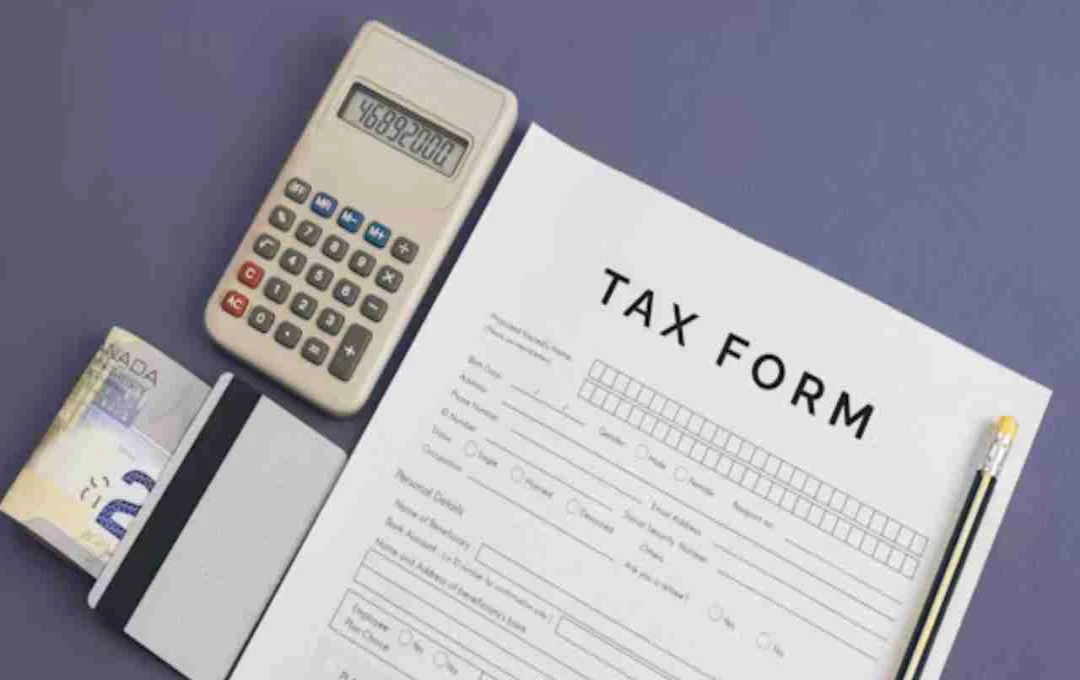If you are a salaried individual, filing an Income Tax Return (ITR) is mandatory. For such taxpayers, two main forms, ITR-1 and ITR-2, are generally available. The appropriate form for you depends on your salary, other income, and investments. Let's understand in which situations you should file which ITR form.
The process of filing Income Tax Returns (ITR) for the financial year 2024-25 has begun. For those whose income comes from salary, the biggest question is whether to file ITR-1 or ITR-2. This time, the Income Tax Department has made some necessary changes in these forms, making the tax filing process easier in some cases than before.
Who can file ITR-1 form

ITR-1 form, also known as 'Sahaj', is for taxpayers whose income is limited and comes from direct sources. To file this form, an individual must be a 'resident' and their taxable income should not exceed ₹50 lakh.
This includes people whose income comes from these sources
- Salary or pension
- Rent from one house or property for own use
- Interest on savings accounts, dividends, or income from 'other sources'
- Long-term capital gains up to ₹1.25 lakh from listed equity shares or equity mutual fund units
- Agricultural income up to ₹5,000
Previously, those with capital gains were excluded from ITR-1
In previous years, if a salaried individual had capital gains from the stock market or mutual funds, they could not file ITR-1. However, under the new rules, taxpayers who have such gains, if they meet certain conditions, can file ITR-1.
These conditions are:
- Capital gains should only be from listed equity shares or equity mutual funds
- This gain should not exceed ₹1.25 lakh in the entire financial year
This change is a relief for taxpayers who earn small amounts by investing in mutual funds or shares.
When to file ITR-2 form
ITR-2 form is for those who do not fall within the limits of ITR-1. This includes taxpayers whose income is somewhat complex or who have income from foreign sources.
The situation of filing ITR-2 form arises when
- The taxpayer's income is more than ₹50 lakh
- An individual's income is from more than one house property
- Capital gains have been made from unlisted shares in the stock market
- Capital gains exceeding ₹1.25 lakh from listed equity shares or mutual funds
- Investment, immovable property, bank account, or any type of foreign assets are present abroad
- The taxpayer earns from Virtual Digital Assets like crypto, NFTs, etc.
- The individual is a director of a company
- The taxpayer falls under the category of 'resident but not ordinarily resident' or 'non-resident'
If you have investments in shares along with your salary, choose the form carefully

Nowadays, many salaried people invest in the stock market or mutual funds. In such cases, if an individual has made a profit from shares, they first need to check whether they come under ITR-1 or ITR-2. If their profit is limited to ₹1.25 lakh and it is earned only from listed shares or mutual funds, then they are eligible for ITR-1. Otherwise, filing ITR-2 will be mandatory.
Understand the difference between ITR-1 and ITR-2 in simple language
ITR-1: Only for salary, one house, interest, dividends, and small capital gains (up to ₹1.25 lakh)
ITR-2: Multiple houses, large capital gains, foreign income, crypto, unlisted shares, or being a company director
HUF and those with foreign income are not allowed ITR-1
If the person filing taxes is filing a return on behalf of a Hindu Undivided Family (HUF) or is working abroad and earning income from there, they cannot file ITR-1. They have to directly use ITR-2.
New budget and alignment with tax forms
The central government had made some small but important changes related to income tax in Budget 2024. These have been incorporated into the ITR-1 and ITR-2 forms. This ensures that taxpayers can file returns by providing information about their correct income and that there will be no disputes in the future.
Keep an eye on the last date for filing ITR
The Income Tax Department fixes the last date for filing Income Tax Returns every year. After this, a penalty may also be imposed for filing returns. This time, the last date for filing ITR without penalty is fixed as July 31, 2025.















